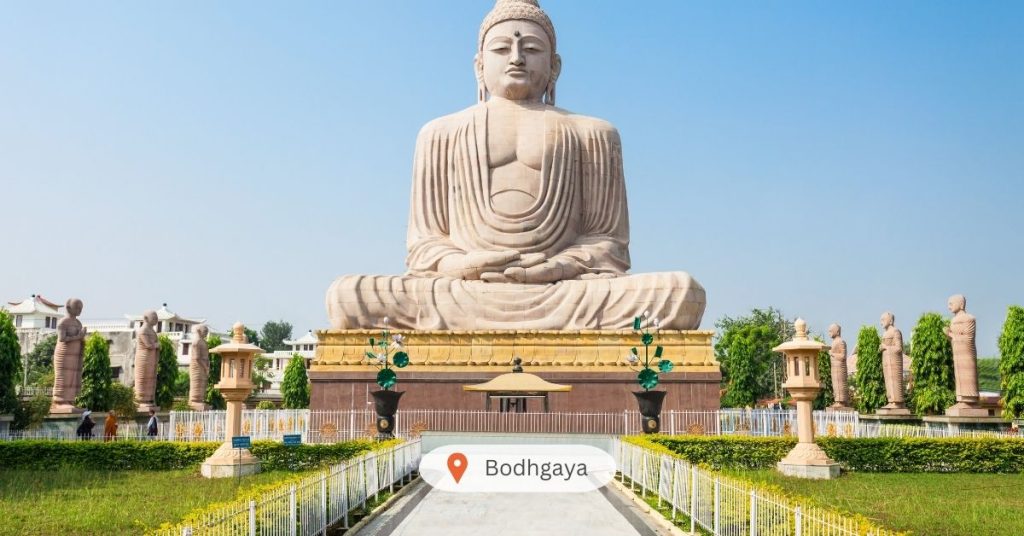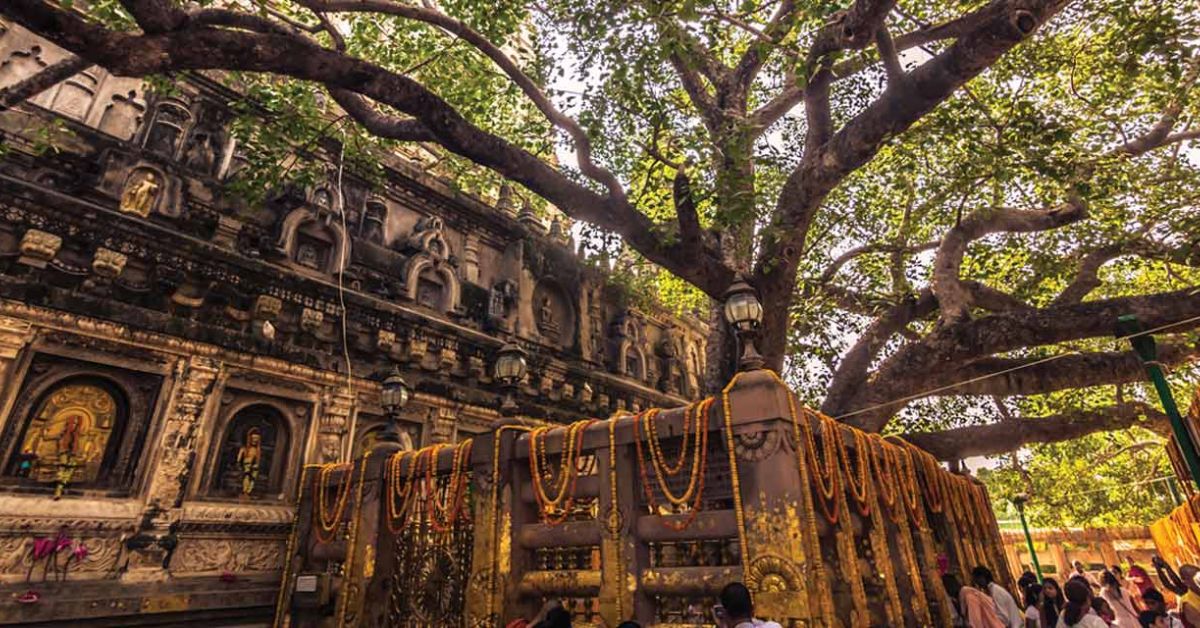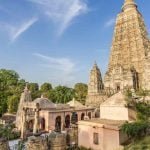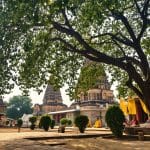Explore the UNESCO World Heritage Sites in Bodhgaya, including the iconic Mahabodhi Temple. Discover their spiritual, historical, and cultural significance for travelers and pilgrims.
Bodhgaya, nestled in the Gaya district of Bihar, India, holds unparalleled spiritual significance as the sacred site where Siddhartha Gautama attained enlightenment and became the Buddha. As a beacon of global pilgrimage, this ancient land is not only revered in Buddhist traditions but also recognized by UNESCO for its universal cultural value. Among the many revered destinations in Bodhgaya, the Mahabodhi Temple Complex stands out as a UNESCO World Heritage Site, symbolizing the heart of Buddhist heritage and architecture.
In this comprehensive guide, we delve into the spiritual essence, historical depth, and architectural brilliance of Bodhgaya’s most important sites, with a spotlight on the UNESCO-listed Mahabodhi Temple Complex and the surrounding sacred spaces that enrich the pilgrim’s journey.
- Mahabodhi Temple Complex – A UNESCO World Heritage Marvel
- Surrounding Sites That Enrich the Pilgrimage Experience
- International Monasteries: A Global Homage to Enlightenment
- Historical & Archaeological Value of Bodhgaya
- Rituals & Pilgrimage Practices in the Temple Complex
- Meditation & Spiritual Programs
- Tips for Visiting the Mahabodhi Temple Complex
- UNESCO Recognition: What It Means
- How to Reach Bodhgaya
- Conclusion
UNESCO World Heritage Sites in Bodhgaya

Mahabodhi Temple Complex – A UNESCO World Heritage Marvel
Recognized by UNESCO in 2002
At the core of Bodhgaya lies the Mahabodhi Temple Complex, an architectural masterpiece and the most important Buddhist pilgrimage site in the world. The temple was inscribed as a UNESCO World Heritage Site in 2002, affirming its outstanding value as one of the earliest surviving brick temples in India, dating back to the 3rd century BCE.
Spiritual Significance
It is believed that under the Bodhi Tree, located within the temple complex, Prince Siddhartha meditated deeply and ultimately attained enlightenment after years of seeking spiritual truth. Today, thousands of monks, pilgrims, and visitors from all corners of the globe gather here to meditate, offer prayers, and bask in the divine serenity of this sacred space.
Architectural Highlights
- The Main Temple Tower: Rising to a height of approximately 55 meters, the temple tower is intricately carved with reliefs and niches, reflecting the evolution of Indian temple architecture.
- The Bodhi Tree: A direct descendant of the original Bodhi Tree under which the Buddha attained enlightenment. It is perhaps the most sacred living symbol of spiritual awakening.
- Vajrasana (Diamond Throne): Believed to mark the exact spot where the Buddha meditated, it was established by Emperor Ashoka in the 3rd century BCE.
- Sacred Lotus Pond: Said to be the place where the Buddha bathed after his enlightenment.
- Meditation Paths and Gardens: Surrounding the temple are serene pathways and lawns where monks sit in silent meditation.
Surrounding Sites That Enrich the Pilgrimage Experience
While the Mahabodhi Temple Complex is the only UNESCO-listed structure in Bodhgaya, the surrounding sacred spaces play a critical role in completing the spiritual landscape. Together, they form a holistic environment that represents the life and teachings of the Buddha.
1. Bodhi Tree (Bodhi Vriksha)
Though located inside the Mahabodhi Complex, the Bodhi Tree deserves special mention. The current tree is said to be the fifth generation of the original tree under which the Buddha meditated. Pilgrims from across the world sit under its expansive branches to practice mindfulness and seek inner peace.
2. Animesh Lochan Chaitya
Located on the north of the Mahabodhi Temple, this small shrine marks the place where the Buddha is believed to have spent a week gazing at the Bodhi Tree without blinking, expressing gratitude and reverence after enlightenment.
3. Cankamana (Cloister Walk)
This is the jewel-paved path where Buddha is believed to have walked in meditation during the third week after his enlightenment. Today, pilgrims walk the same route, emulating the steps of the enlightened one.
4. Rajayatna Tree Site
Here, Buddha is said to have meditated under the Rajayatna tree, and it is believed that the first two lay disciples offered him food at this spot.
International Monasteries: A Global Homage to Enlightenment
Though not individually listed under UNESCO, Bodhgaya is home to a unique congregation of international monasteries and temples, built by Buddhist communities from across the globe. Each reflects the distinct architectural and spiritual traditions of countries like Thailand, Bhutan, Japan, Myanmar, Sri Lanka, Vietnam, and Tibet.
Noteworthy International Monasteries:
- Thai Monastery: A beautifully sculpted temple with curved, golden rooftops and a serene ambiance.
- Japanese Nippon Temple: A wooden temple that echoes Zen simplicity and harmony.
- Tibetan Karma Temple: Home to striking Buddhist murals and prayer flags that flutter in the wind.
- Vietnamese Temple: A peaceful complex with ornate statues and floral gardens.
These temples contribute to Bodhgaya’s rich tapestry of global spiritual heritage, offering visitors the rare experience of witnessing multiple Buddhist traditions in one sacred town.
Historical & Archaeological Value of Bodhgaya
The Mahabodhi Temple Complex not only represents a spiritual pilgrimage but also serves as an important archaeological site for historians and researchers. Several excavations have unearthed relics, inscriptions, and sculptures that trace the development of Buddhist art, iconography, and architecture from the Mauryan to the Gupta period.
Key historical insights include:
- Ashokan Pillars and Edicts marking the emperor’s patronage of Buddhism.
- Buddhist Sculptures in the nearby Archaeological Museum depicting various mudras and scenes from Buddha’s life.
- Gupta-era Carvings known for their elegance and spiritual depth.
Rituals & Pilgrimage Practices in the Temple Complex
Visiting the Mahabodhi Temple is a deeply immersive spiritual experience. Pilgrims typically engage in:
- Circumambulation (Parikrama) around the temple and Bodhi Tree.
- Chanting and Prayers, often in multiple languages.
- Lighting of butter lamps and incense as offerings.
- Prostrations performed continuously in the meditation halls.
- Silent Meditation, observed in designated zones.
The temple comes alive particularly during Buddha Purnima, Kathina Ceremony, and other key festivals when thousands gather for chanting, cultural performances, and community prayers.
Meditation & Spiritual Programs
The Mahabodhi Temple and surrounding monasteries offer various meditation retreats and spiritual courses, including:
- Vipassana sessions
- Tibetan Buddhist teachings
- Zen sitting meditation
- Mindfulness workshops
These programs are often free or donation-based, attracting spiritual seekers from across the globe who wish to deepen their connection with the teachings of the Buddha.
Tips for Visiting the Mahabodhi Temple Complex
- Entry is Free: But there are minor charges for camera use.
- Open Hours: 5 AM to 9 PM daily. Mornings and evenings are the most serene times to visit.
- Dress Modestly: Respect the sanctity of the temple.
- No Footwear Inside: Shoes must be removed at the entrance.
- Silence is Golden: Keep conversations minimal and respectful.
UNESCO Recognition: What It Means
The designation of the Mahabodhi Temple Complex as a UNESCO World Heritage Site underlines its:
- Cultural universality
- Historical continuity
- Religious significance
- Architectural uniqueness
It is a living example of how spiritual legacy and cultural heritage can harmoniously thrive in the modern world.
How to Reach Bodhgaya
- By Air: Gaya International Airport is just 12 km away.
- By Train: Nearest station is Gaya Junction, 16 km away.
- By Road: Well-connected by buses and taxis from Patna, Varanasi, and Kolkata.
Conclusion
Bodhgaya is more than a destination—it is a journey into the soul of humanity’s search for truth and enlightenment. The UNESCO World Heritage Mahabodhi Temple Complex, surrounded by sacred relics, ancient rituals, and global monasteries, forms the spiritual and cultural nucleus of Buddhist heritage. Whether you are a pilgrim, a historian, or a curious traveler, Bodhgaya offers an unforgettable immersion into peace, reflection, and sacredness.






